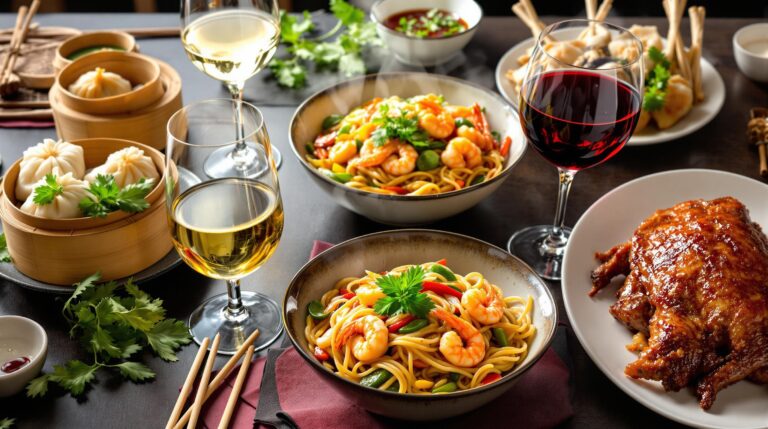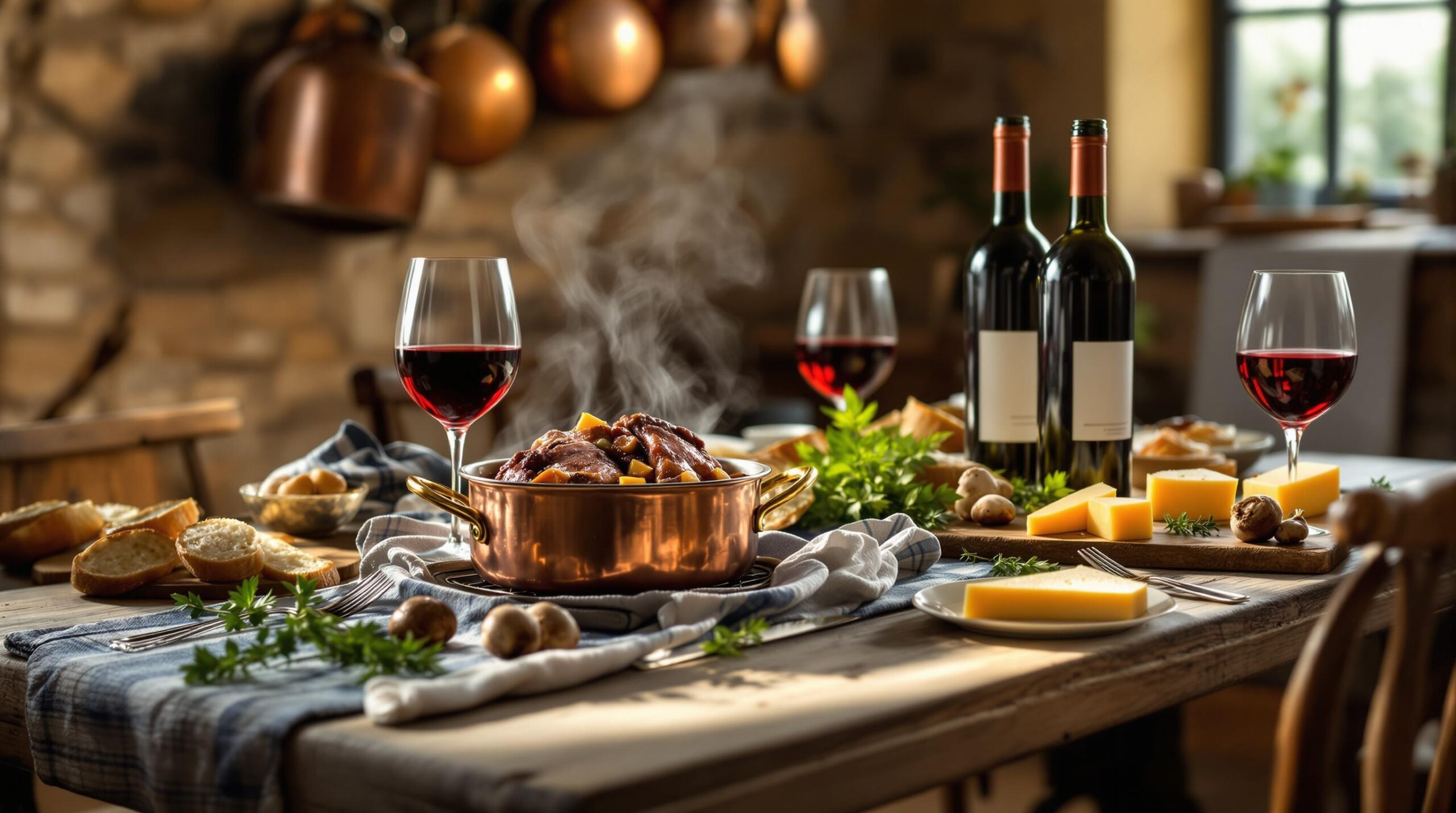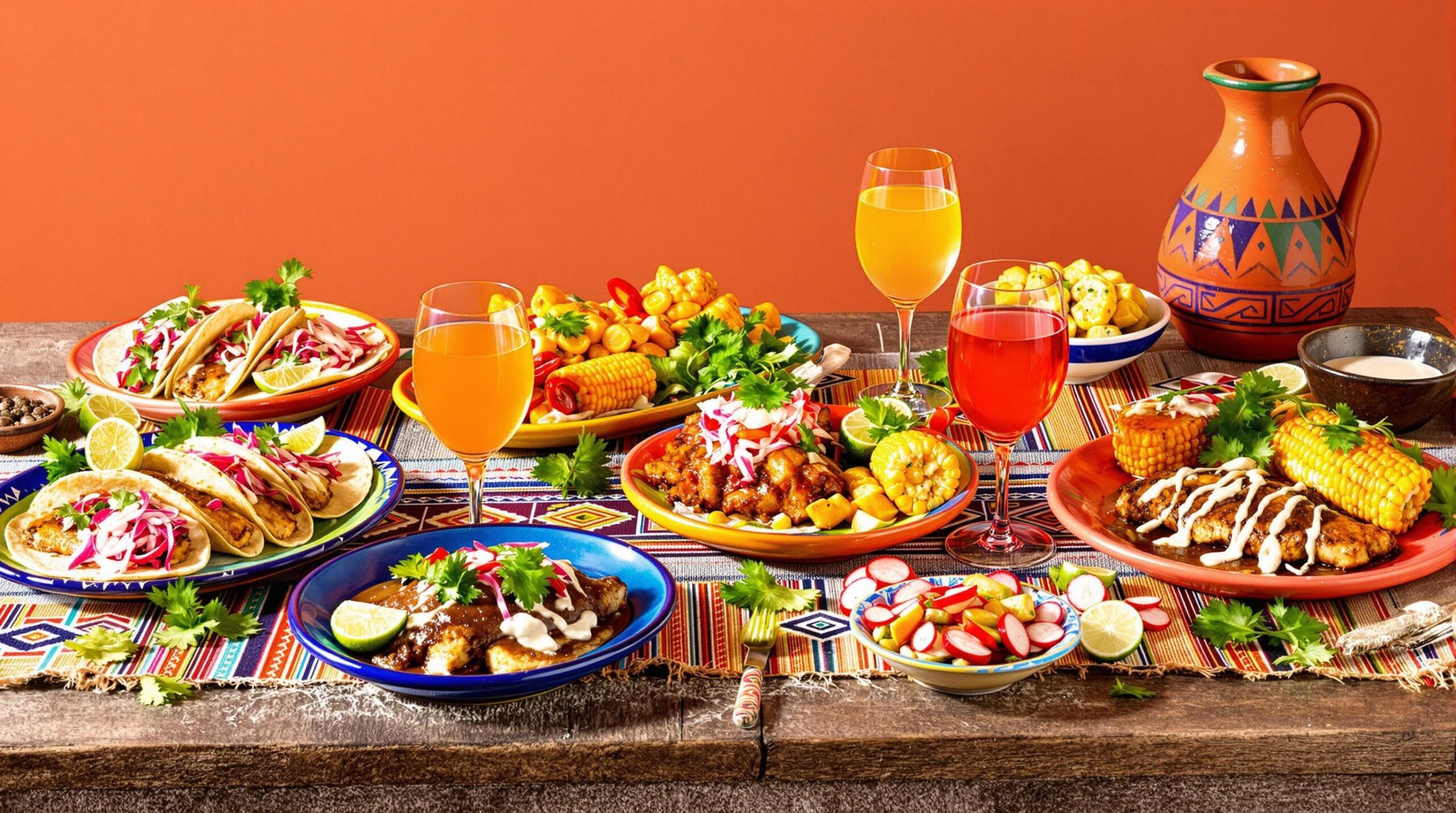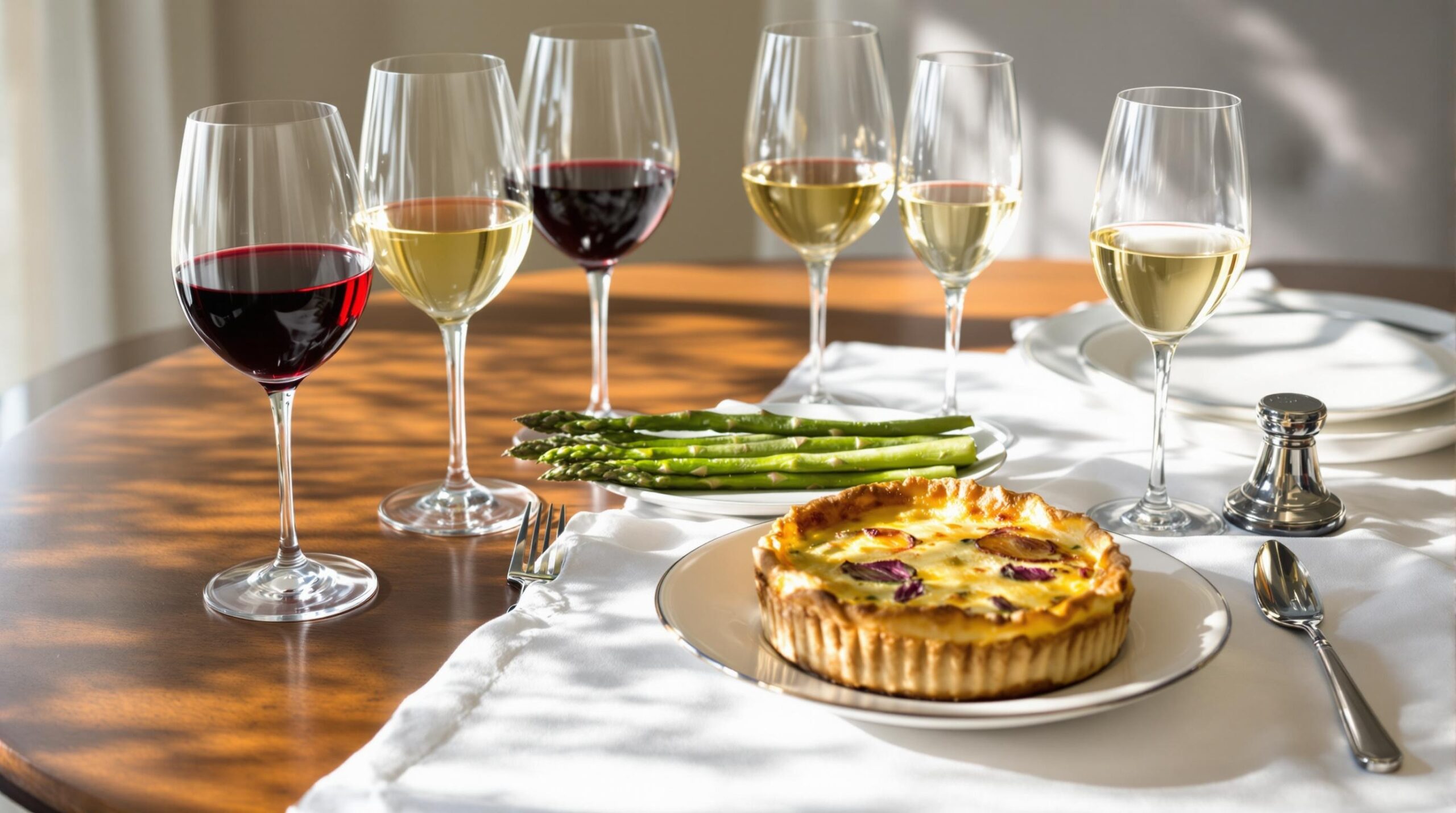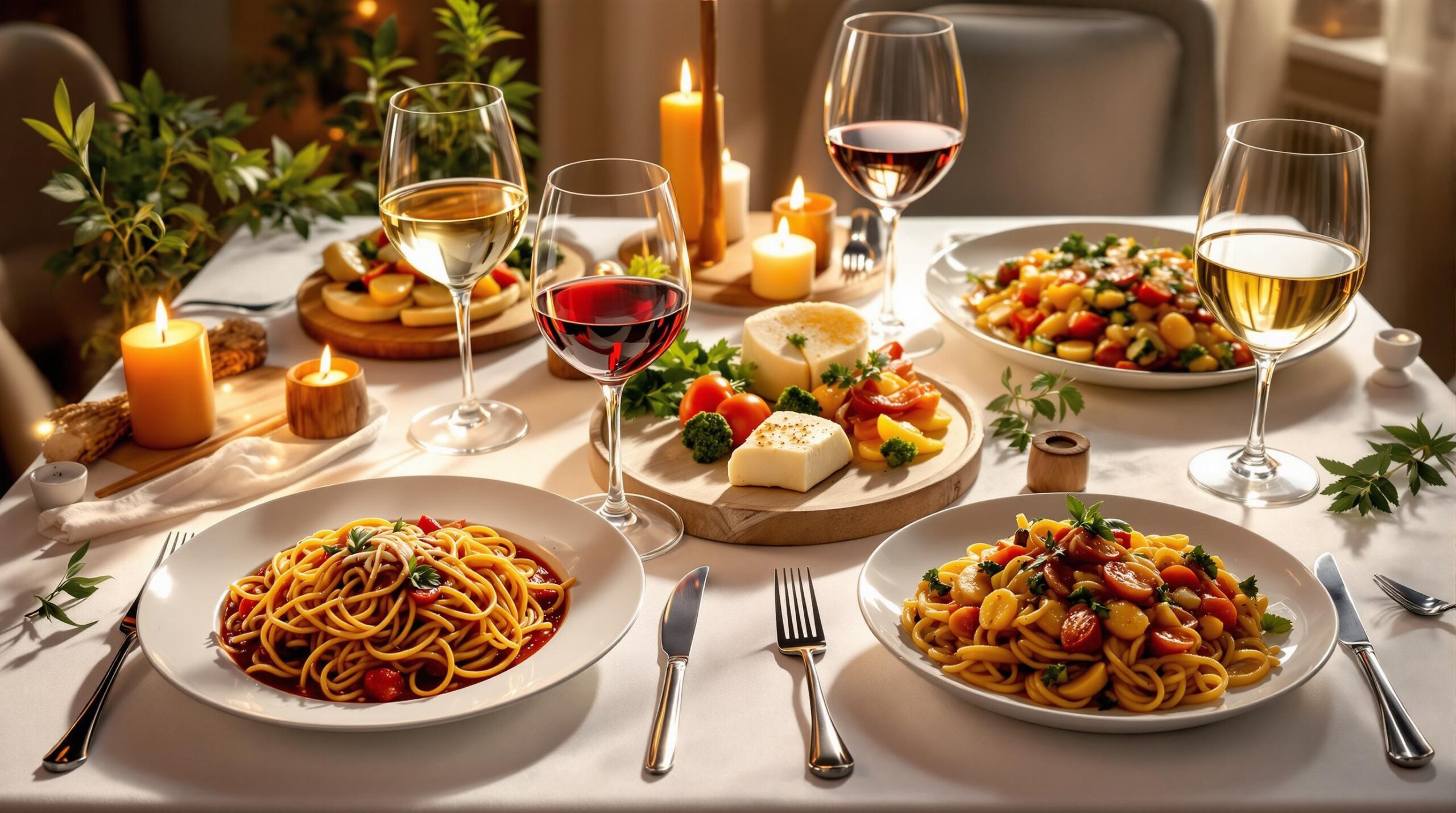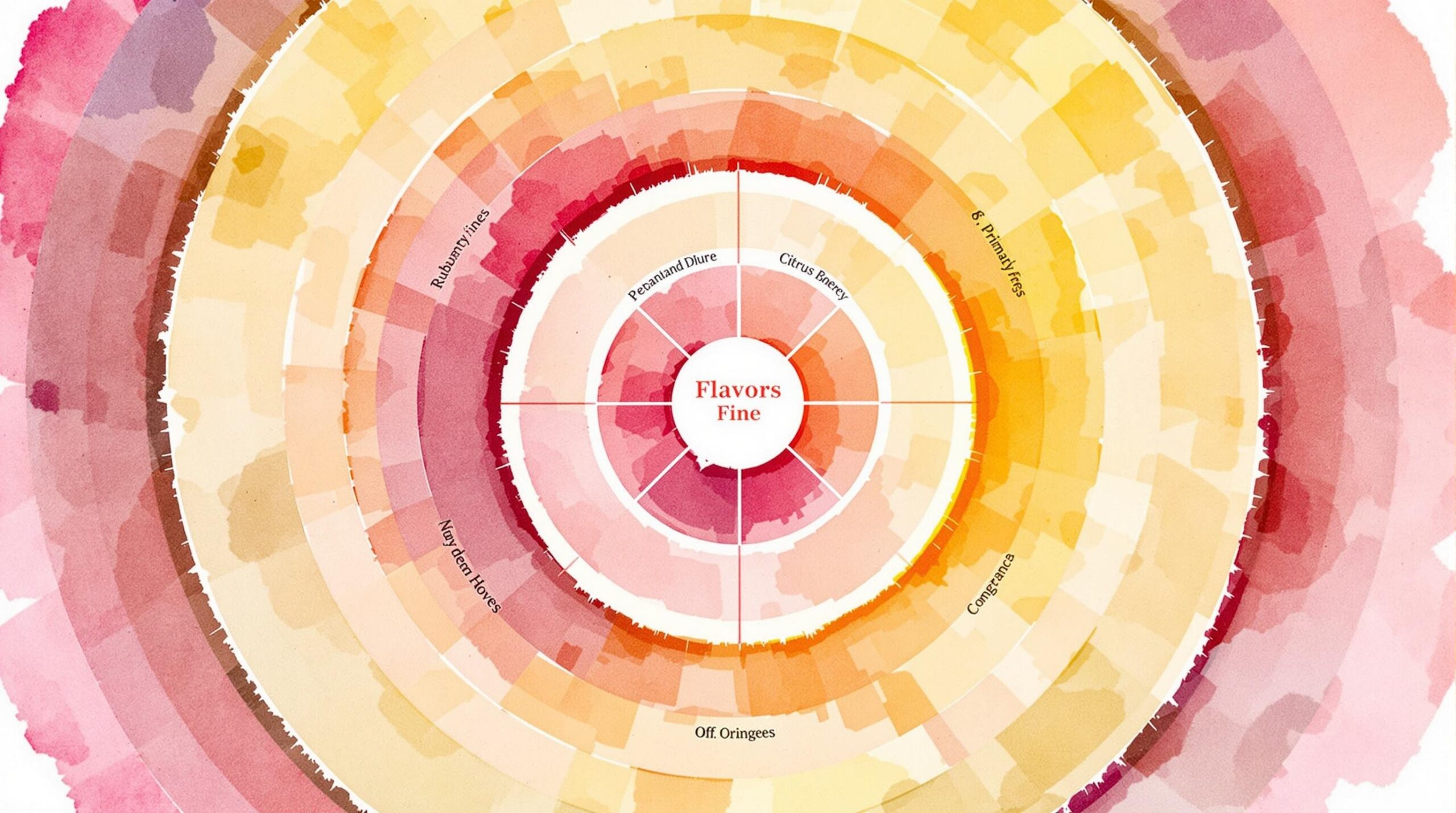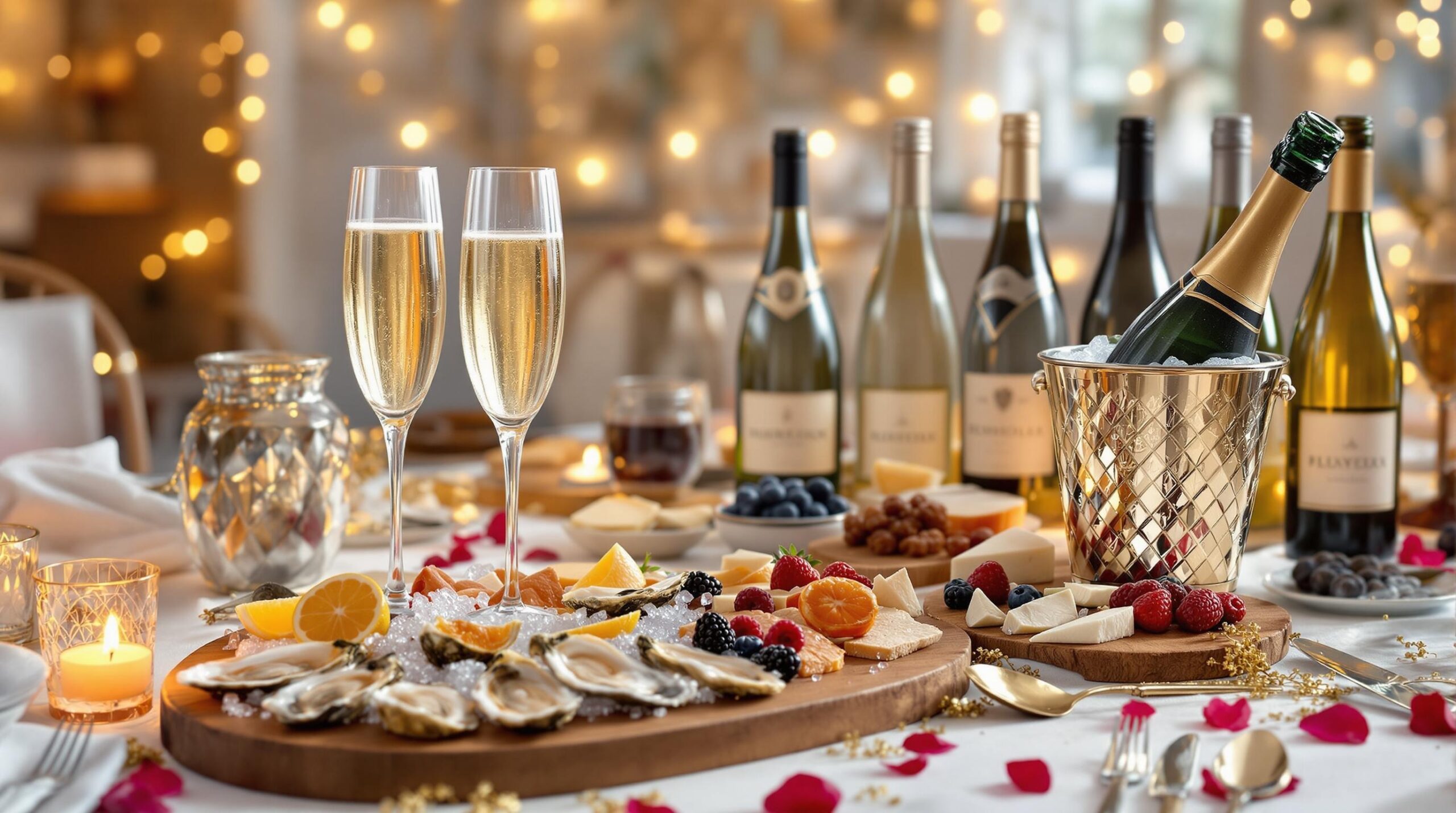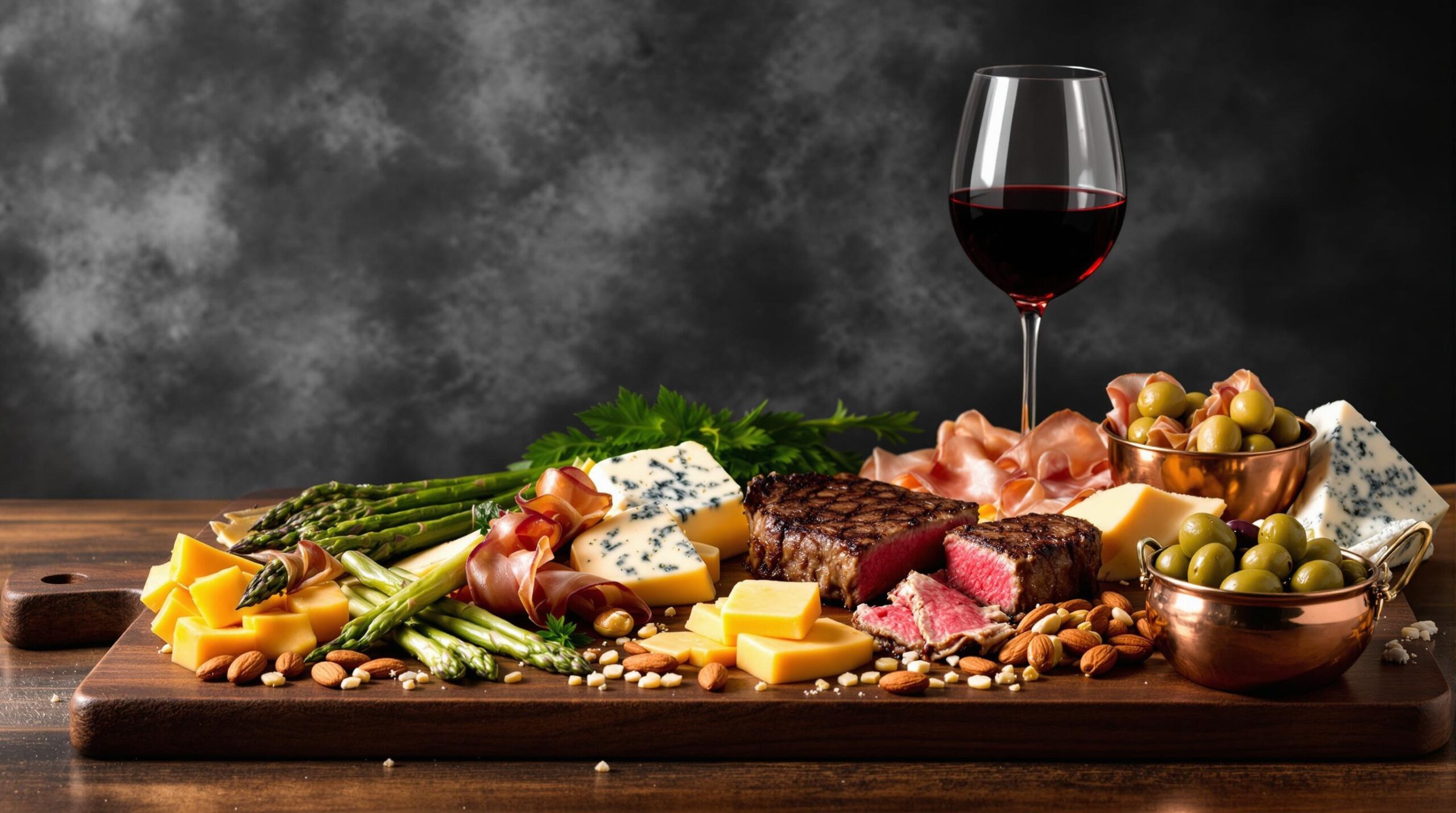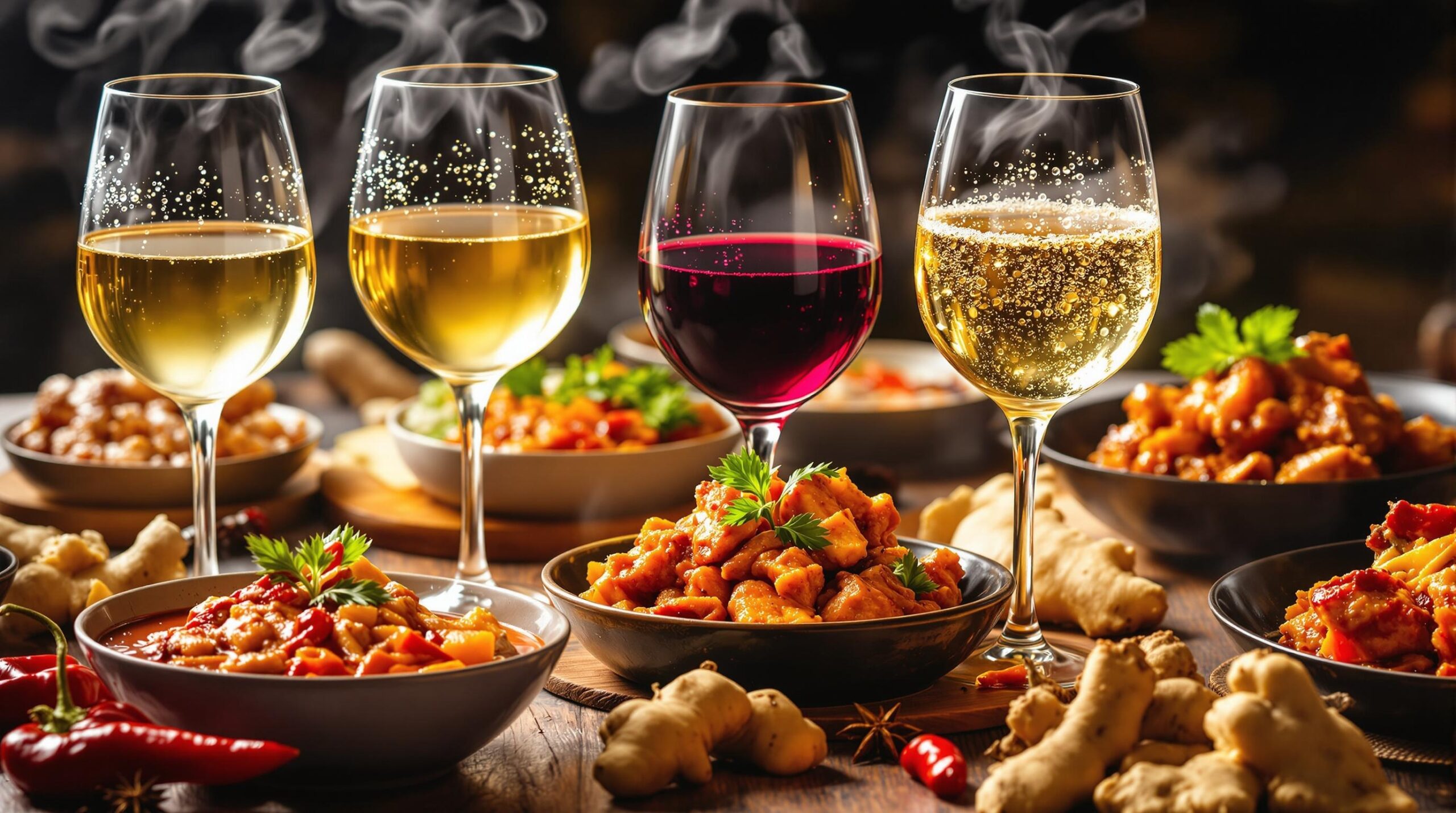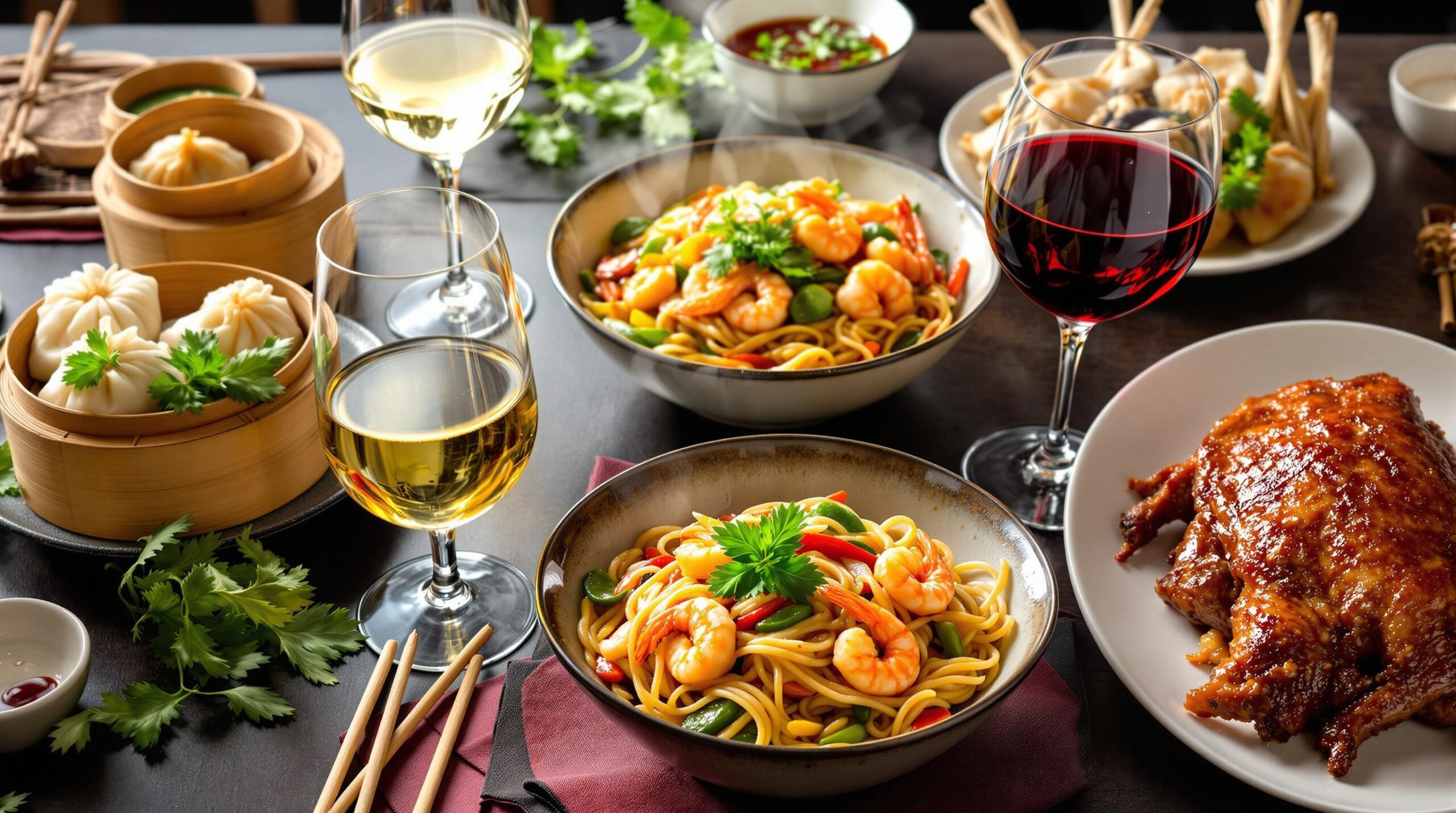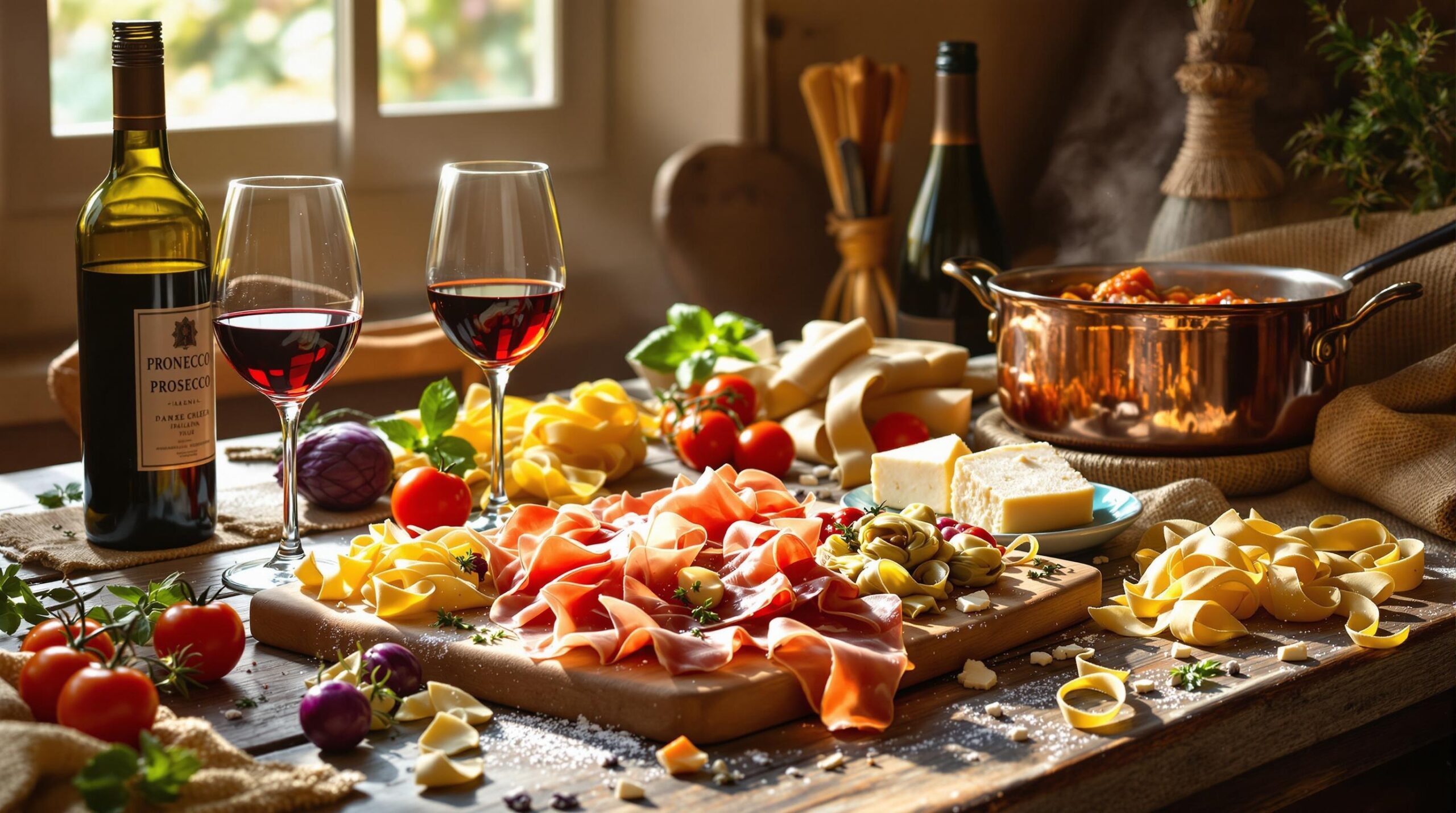Matching wine with Asian flavors presents unique opportunities and challenges. Finding the right pairings enhances both the food and wine experience, creating memorable meals whether dining out or cooking at home.
Understanding Asian Flavor Profiles
The five fundamental tastes – sweet, sour, salty, bitter, and umami – play prominent roles in Asian cooking. These flavors combine with ingredients like ginger, lemongrass, soy sauce, and various spices to create complex taste profiles that require thoughtful wine selection.
Regional Flavor Characteristics
- Chinese: Balanced sweet and savory, often with garlic and ginger
- Japanese: Subtle, clean flavors with umami notes
- Thai: Spicy, sour, and sweet combinations
- Vietnamese: Fresh herbs, citrus, and fish sauce
- Korean: Fermented flavors, spice, and garlic
Best Wine Varieties for Asian Dishes
Aromatic whites and light-bodied reds typically complement Asian cuisine well.
Top Wine Choices
| Wine Type | Best Paired With |
|---|---|
| Riesling | Spicy dishes, sweet-sour combinations |
| Gewürztraminer | Aromatic dishes, curry |
| Pinot Noir | Duck, mushroom dishes |
| Prosecco | Dim sum, light appetizers |
Pairing Strategies by Cooking Method
Different cooking techniques affect wine pairing decisions:
- Stir-frying: Light to medium-bodied whites
- Steaming: Crisp, mineral-driven wines
- Grilling: Light reds or fuller-bodied whites
- Deep-frying: Sparkling wines or high-acid whites
Spice Level Considerations
The heat intensity in Asian dishes impacts wine selection dramatically. Match wine sweetness and alcohol levels to balance spiciness without overwhelming the palate.
Spice-Level Wine Guidelines
- Mild spice: Dry whites like Sauvignon Blanc
- Medium spice: Off-dry Riesling or Gewürztraminer
- Hot spice: Sweet Riesling or Moscato
- Extra hot: Sparkling wines or beer alternatives
Regional Wine and Food Matches
Each Asian cuisine has traditional pairings that work particularly well with specific wines.
Classic Regional Pairings
| Cuisine | Recommended Wine |
|---|---|
| Sushi/Sashimi | Junmai Daiginjo Sake, Chablis |
| Peking Duck | Pinot Noir, Beaujolais |
| Thai Green Curry | Off-dry Riesling |
| Korean BBQ | Syrah, Zinfandel |
Home Entertaining Tips
Create successful Asian-themed dining experiences with smart planning and presentation.
Entertainment Essentials
- Serve wines slightly chilled (45-55°F for whites, 55-65°F for reds)
- Offer multiple wine options for varied dishes
- Use proper glassware to enhance aromas
- Consider wine flight tastings with different courses
Making Asian-Wine Pairings Work
Success comes from understanding balance and being willing to experiment. Start with these tested combinations and adjust based on personal taste preferences.
Quick Pairing Rules
- Match wine weight with food intensity
- Consider sauce more than protein
- Use acidity to cut through rich dishes
- When in doubt, choose sparkling wine
Remember to keep your wine cellar stocked with versatile options like Riesling, Gewürztraminer, and light-bodied reds that work across multiple Asian cuisines.
10 Common Questions About Wine with Asian Food
What wines work best with spicy Asian dishes?
Off-dry Riesling and Gewürztraminer balance spicy heat while enhancing flavors. The slight sweetness helps cool down spiciness, while their aromatic profiles complement Asian spices.
How do I pair wine with sushi?
Light, crisp whites like Chablis or Sancerre match raw fish perfectly. For rolls with avocado or tempura, try sparkling wine to cut through richness.
Which red wines work with Asian food?
Choose lighter reds with low tannins like Pinot Noir or Beaujolais. Heavy, tannic reds can clash with delicate flavors and amplify spiciness.
What wine pairs with dim sum?
Champagne or Prosecco complement the variety of flavors and textures. Their bubbles refresh the palate between different dishes.
Can I serve wine with Korean BBQ?
Medium-bodied reds like Malbec or Syrah work well with grilled meats. For banchan (side dishes), keep a versatile white like Grüner Veltliner handy.
What about wine with Thai curries?
Match coconut-based curries with aromatic whites like Viognier or Torrontés. Their tropical fruit notes enhance curry flavors without overwhelming them.
Which wines suit Vietnamese food?
Dry Riesling or Chenin Blanc complement fresh herbs and citrus flavors. Their acidity matches the bright, fresh character of Vietnamese cuisine.
How do I pair wine with noodle dishes?
For ramen and similar broths, try dry sherry or sake. With stir-fried noodles, light whites like Pinot Grigio work well.
What wine works with sweet-and-sour dishes?
Choose off-dry whites like Moscato or Vouvray. They balance both sweet and tangy elements while adding complementary fruit notes.
Which wines match vegetarian Asian dishes?
Sauvignon Blanc pairs well with green vegetables and tofu. For mushroom-based dishes, try light reds like Gamay.
Quick Tips for Asian Food and Wine Pairing
- Consider the dominant flavor (spicy, sweet, umami) rather than just the protein
- Keep alcohol levels moderate (under 13.5%) as high alcohol can amplify spiciness
- Choose wines with good acidity to cut through rich or fatty dishes
- Have both red and white options available for variety in shared meals
- When in doubt, sparkling wine works with most Asian dishes
Recommended Wine Styles for Asian Cuisine
| Wine Style | Best Paired With |
|---|---|
| Off-dry Riesling | Spicy dishes, Vietnamese food |
| Gewürztraminer | Chinese food, aromatic dishes |
| Pinot Noir | Duck, mushroom dishes |
| Sparkling Wine | Dim sum, fried foods |
| Sauvignon Blanc | Seafood, vegetable dishes |

